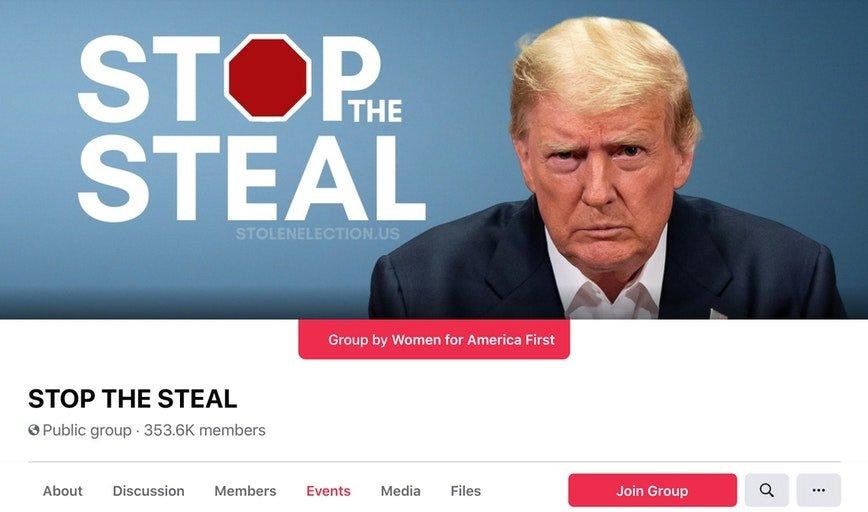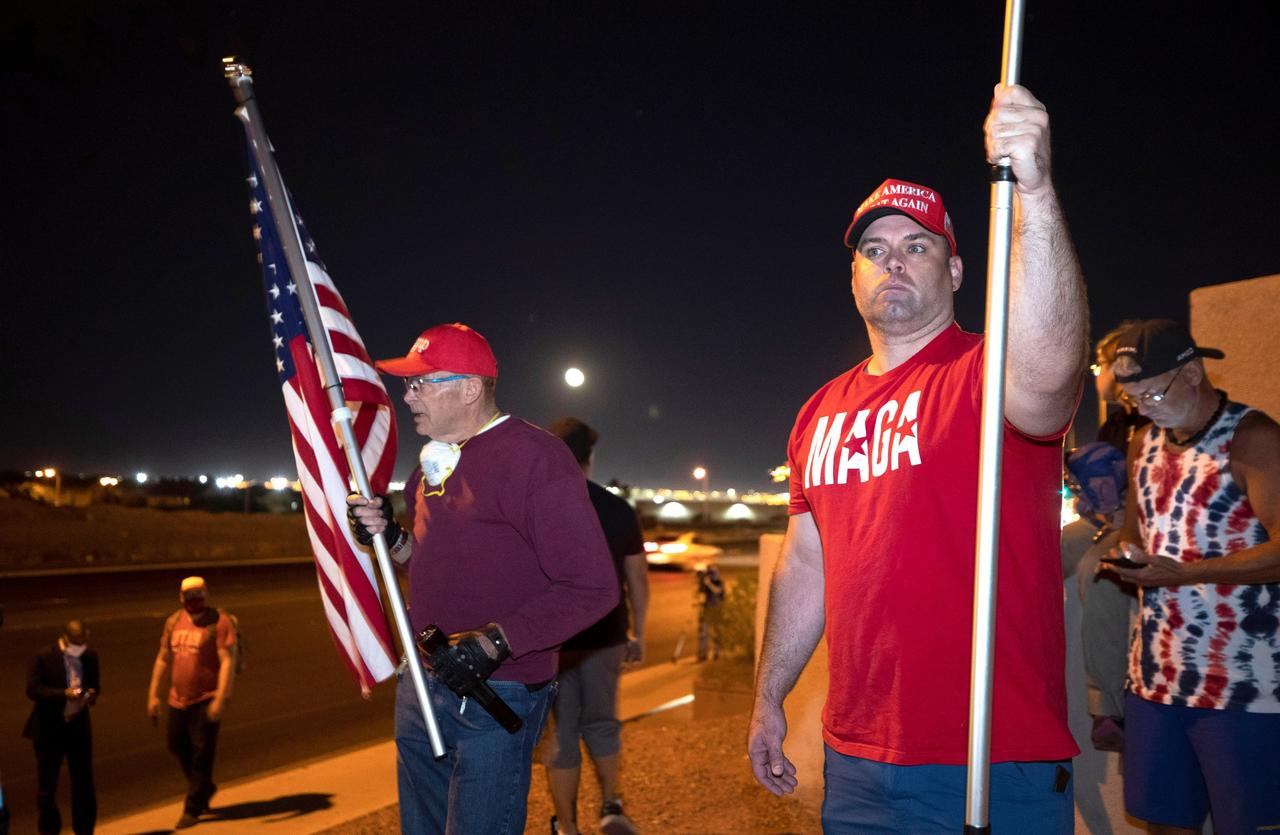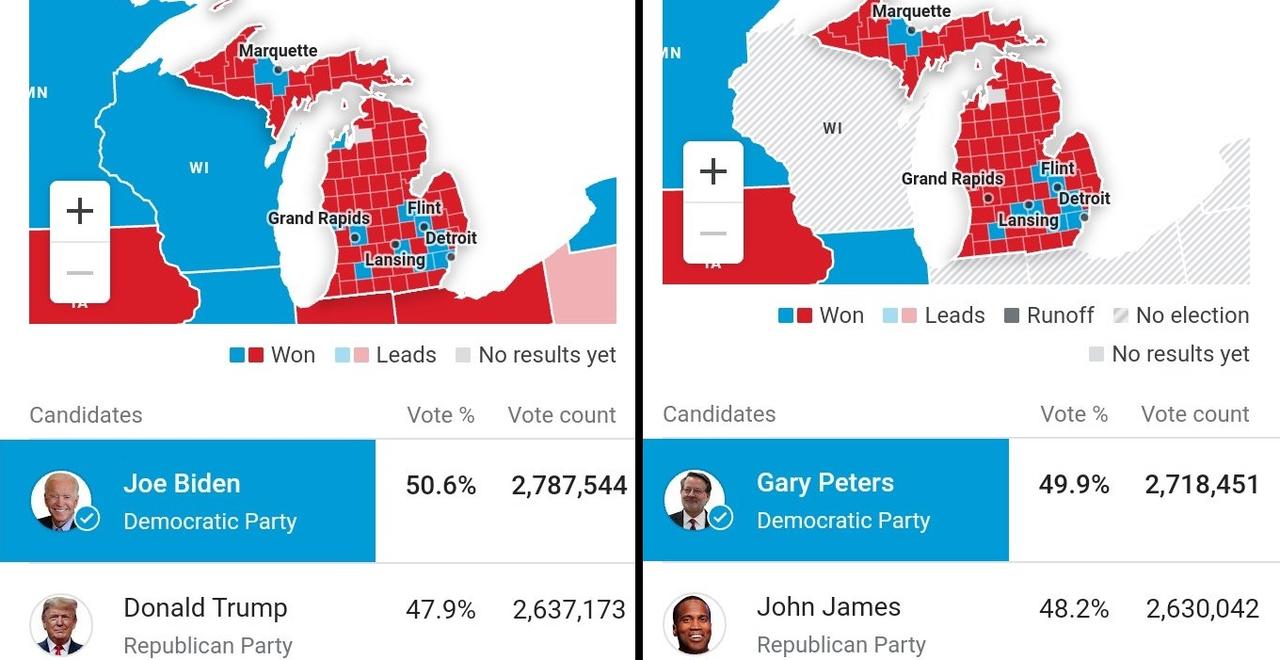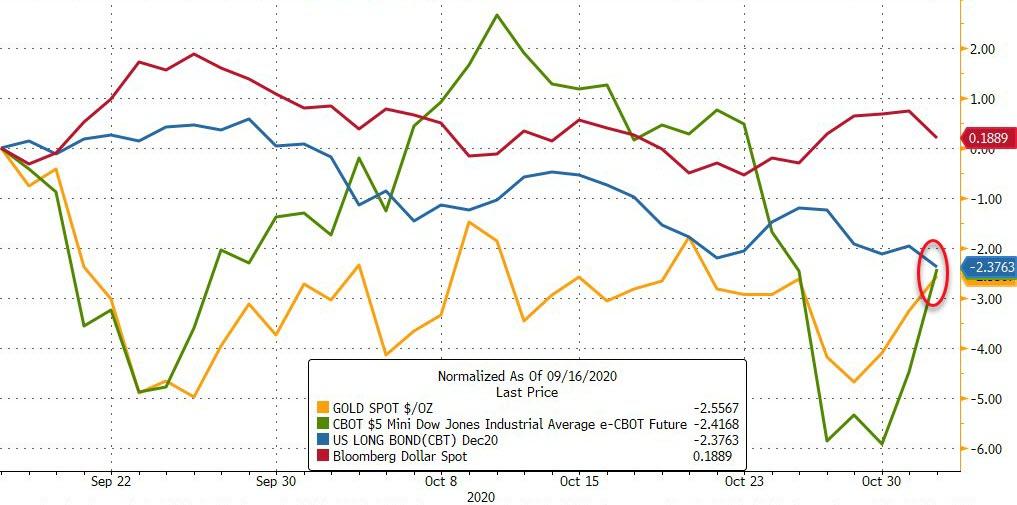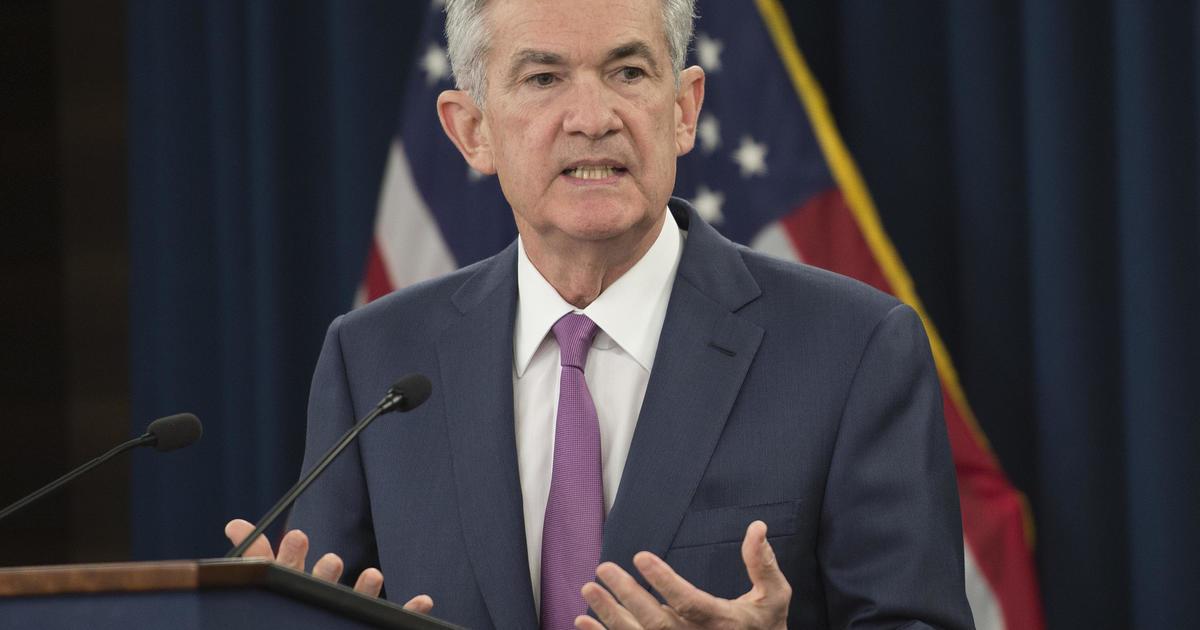Elections come and presidents go. But the Supreme continues to chug along, like nothing happens. Unless, of course the Supreme Court has to decide the election. Or if the election results in the expansion of the Supreme. For now, at least, neither option looks feasible. On Wednesday morning, as the ballots were still being tabulated, the Supreme Court heard oral arguments in Fulton v. City of Philadelphia.
The session, which lasted nearly two hours, was absolutely fascinating. Lori Windham of the Becket Fund for Religious Liberty argued on behalf of the Plaintiffs. (I am co-counsel with Becket in a different case challenging New York’s lockdown measures). Hashim Mooppan, Counselor to the Solicitor General, argued on behalf of the United States. Neal Katyal represented the city of Philadelphia. And Jeff Fisher represented the Support Center for Child Advocates and Philadelphia Family Pride Respondents. An all-star cast all around. And the Justices brought their A-games.
Much of the case focused on a fairly technical fact question: should Catholic Social Services (CSS) be treated as mere contractor, or instead a licensee. There was some dispute about whether the First Amendment analysis would differ with regard to those two different statuses. This predicate factual question may give the Court an easy out to avoid ruling on the more difficult constitutional question.
This post will focus on four broader issues. First, Fulton picked off where Obergefell left off: how does opposition to same-sex marriage compare to opposition to interracial marriage? Second, Justice Breyer continues to wrestle with the Religion Clauses. He is truly conflicted about how to balance the rights of religious communities with those of the greater community. Third, we got an early glimpse of how Justice Barrett views stare decisis, Smith, and Sherbert. Fourth, Justices Alito saw this case, at base, about animus towards the Catholic church’s views on same-sex marriage. In this post, I’ll presume a general familiarity with the facts and history of this litigation.
1. Same-Sex Marriage and Interracial Marriage
Throughout the arguments, several Justices brought up the Loving question. If CSS was allowed to decline to evaluate same-sex couple, could another religious group be given a similar exemption for interracial couples. For example, Justice Sotomayor asked Windham what would happen if a religious organization asked to “exclude interracial couples” from their assessments. Windham did not answer that question directly. She pivoted, and explained that Philadelphia allows foster service agencies to consider whether a family has a disability. In other words, the state’s interest could not be so compelling if it created other exemptions
Justice Barrett continued the theme:
What if there was an agency who believed that interracial marriage was an offense against God and, therefore, objected to certifying interracial couples as foster families? Would they be entitled to an exemption and, if so, how is that distinguishable from –or, if not, how is that distinguishable from CSS’s refusal to certify children to couples in same-sex marriages?
Windham responded that “in Loving and other cases that government has a compelling interest in eradicating racial discrimination.”
Hashim Mooppan, Counselor to the Solicitor General, gave a very similar answer in response to Justice Breyer’s question: “I would differentiate the interracial marriage . . . this Court has made clear repeatedly that there’s a particularly compelling interest in eradicating racial discrimination.”
Mooppan cited Pena–Rodriguez v. Colorado: “race is unique in this country’s constitutional history, and eradicating that type of racial discrimination pretends –presents a particularly unique and compelling interest.”
Later, Justice Alito threw Moopan a lifeline. He recounted Justice Kennedy’s observation in Obegefell that “there are honorable and respectable reasons for continuing to oppose same-sex marriage?” Alito added, “Would the Court say the same thing about interracial marriage?” Of course, Justice Alito was alluding to his question to Solicitor General Verrilli about Bob Jones.
Justice Alito: Well, in the Bob Jones case, the Court held that a college was not entitled to tax-exempt status if it opposed interracial marriage or interracial dating. So would the same apply to a 10 university or a college if it opposed same-sex marriage?
General Verrilli: You know, I don’t think I can answer that question without knowing more specifics, but it’s certainly going to be an issue. I don’t deny that. I don’t deny that, Justice Alito. It is –it is going to be an issue.
Yeah, it’s going to be an issue. Now!
Later, Justices Breyer questioned Mooppan about the question Verrilli punted on: was the state’s interest in eradicating opposition to interracial marriage greater than the interest in eradicating opposition to same-sex marriage.
Next, Justice Sotomayor returned to this theme, with a variation. The compelling interest concerned the elimination of the stigma attached to the discrimination.
Counsel, I’ve always thought that a compelling state interest that motivated our holdings in racial discrimination cases was not merely that race was important but that the burden on the people who are rejected because of race is an interest that the state could seek to protect, that a rejection on the basis of race or any protected category creates a stigma on that person and that it’s a compelling state interest for the state to have an anti-discrimination law on the basis of protected classes. Are you –are you diminishing that as a compelling state interest?
Justice Kagan would pounce on this issue. She was on a mission. She wanted to corner the federal government on the Bob Jones question left unresolved in Obergefell.
First, she asked how Mooppan would compare racial discrimination with sex-discrimination.
Justice Kagan: If I understood you correctly, you said that it is a compelling state interest to eradicate racial discrimination, but it is not a compelling state interest to eradicate discrimination on the basis of sexual orientation. And I was wondering where in this scale that you’re using would discrimination on the basis of gender come. Would –would that be a compelling state interest? So, for example, if there’s an agency that refuses to employ women, would the state have to contract with that agency?
You know what the follow-up question to “gender” would be? Bostock! Isn’t discrimination on the basis of sex the same thing as discrimination against LGBT couples? (Thank you Justice Gorsuch). Mooppan didn’t take the bait. He bobbed and weaved.
Then Dean Kagan went for the kill. This colloquy must have given the HLS graduate flashbacks to 1L:
JUSTICE KAGAN: Do you think there’s a compelling state interest to try to eradicate discrimination against gays and lesbians? Is that a compelling state interest?
MR. MOOPPAN: So we’re not denying the significance of that interest in the abstract. What we’re saying is that –
JUSTICE KAGAN: Is it a compelling state interest, Mr. Mooppan?
MR. MOOPPAN: In the abstract, perhaps, but, on the facts of this case, the government has undermined that interest –
JUSTICE KAGAN: I don’t want –
MR. MOOPPAN: –by recognizing –
JUSTICE KAGAN: –Is it perhaps, or is it yes or is it no?
MR. MOOPPAN: Well, Your Honor, we haven’t taken a position on that question….
Later, Kagan return to the theme, and and asked if racial discrimination is a “super-compelling” state interest (sort of like a super-precedent!):
JUSTICE KAGAN: That’s why it’s super-compelling. Is that the idea?
MR. MOOPPAN: That’s right. As this Court said in Pena-Rodriguez, where it recognized an exception to the jury impeachment rule for racial discrimination, particularly in –
JUSTICE KAGAN: Yes. I mean, race is sui generis in our society in all kinds of ways, but a compelling state interest usually allows the state to act. It doesn’t usually; it does.
MR. MOOPPAN: Right. And the question is whether the government has undermined that interest by recognizing exceptions.
I think Mooppan did about as well as he could given the United States’s position. There is not a good answer to the questions. Once you concede that the state interest for interracial marriage is different from the state interest for same-sex marriage, you have to explain why. Justice Kennedy’s offering in Obergefell only gets you so far. And given Bostock, you have to now contend with why sex discrimination is different. (Thank you Justice Gorsuch).
Neal Katyal, Philadelphia’s attorney, acknowledged that the question was not answered:
MR. KATYAL: Justice Sotomayor asked that question, apart from race, and I didn’t quite hear a response from the other side.
Later, Justice Barrett returned to this issue during her questioning of Jeff Fisher.
JUSTICE BARRETT: I want to sneak in other question. I think we would agree that there’s really not any circumstance we can think of in which racial discrimination would be permitted as a religious exemption. Can you think of any example in which saying, as, you know, CSS has done here, that they, you know, will not certify same-sex couples, that –where an objection to same-sex marriage would justify an exemption? Or is it like racial discrimination?
Fisher took the issue head-on. He saw no difference between interracial marriage and same-sex marriage: the compelling interest analysis would be the same.
MR. FISHER: Well, Justice Barrett, I think for purposes of your analysis here, it is like race discrimination. I understand that race is special in many ways in the Court’s jurisprudence. But, as Justice Gorsuch stressed in Masterpiece Cakeshop, it is the proudest boast of free exercise jurisprudence that we do not judge the legitimacy or the offensiveness of religious beliefs. If they are deeply felt, which, as we know from the Bob Jones case, for example, some religious organizations do have deeply felt views about interracial marriage. I think the Court would have to accept them. Then the only question would be whether the compelling interest test applies differently in that scenario. And I don’t think it would.
And Fisher tied together Jaycees and Bostock to hold that there is a compelling interest to eradicate sexual orientation discrimination (Thank you Justice Gorsuch).
As a matter of just compelling interest law, the Court has said not just that governments have an interest in eradicating race discrimination, but also in Jaycees the Court said sex discrimination, as we know from last term in Bostock, this could be thought is of as sex discrimination. And so I just don’t think you could draw a line in this context between sexual orientation [and racial discrimination]
This opinion will be difficult to write. Justice Breyer recognized this issue in his questioning of Mooppan:
I’m sorry. I want to interrupt you right here because now two of you have said this, that we should write an opinion which says discrimination on the basis of race, constitutionally speaking, is different than discrimination on the basis of gender, on the basis of religion, on the basis of nationality, on the basis of homosexuality, all right? Is that the opinion you want us to write?
I don’t know how the Court will resolve this issue.
2. Justice Breyer continue to wrestle with the Religion Clauses
Justice Breyer is consistently conflicted on religion clause cases. In 2005, he split his votes in the Ten Commandments Cases. In Van Orden v. Perry, he allowed the Texas monument to stand. But in McCreary County, he voted that the Kentucky display had to go. At the time, Justice Breyer wrote that the Court should work hard to avoid religious strife among between people of faith and those who oppose public displays of religion.
A decade later, during oral arguments in Zubik v. Burwell, Justice Breyer expressed a similar concern. He worried how to accommodate religious communities, while still ensuring that women would have access to contraceptive coverage. In Zubick, the short-handed Court punted, and asked the parties if there was some way to work out the conflict without the judiciary’s intervention. The Court gave the parties “an opportunity to arrive at an approach going forward that accommodates petitioners’ religious exercise while at the same time ensuring that women covered by petitioners’ health plans ‘receive full and equal health coverage, including contraceptive coverage.'” The compromise would turn on the precise paperwork that the religious organizations had to sign, and whether the government could still ensure seamless contraception coverage. I strongly suspect that this order was crafted by Justice Breyer.
During the Fulton arguments, Justice Breyer seemed to be hinting at a very similar compromise. Catholic Social Services (CSS) objected to evaluating same-sex couples for foster placements. Justice Breyer asked Lori Windham whether there is some possible workaround that would not offend their beliefs. His questions reminded me of the Zubick order. Breyer asked what would happen if CSS was allowed to “say whatever you want about same-sex” couples, and then “evaluate this couple irrespective of [whether they are the same] same or different sex.” In other words, CSS could write on the report that they object to same-sex unions, but in all other regards, the couple is suitable for a foster placement.
Wyndham responded that “the head of Catholic Social Services testified that certifying a home of a same-sex couple would be in violation of that religious belief.” Specifically, “a final home study includes a written endorsement of the relevant relationships of the foster parent.” Windham’s answer brought me back to Paul Clement’s argument during Zubik. He argued that his clients could not certify the forms, because that certification would make them complicit in sin. Windham, along similar lines, said that Philadelphia was “asking CSS to . . . certify, validate, and make statements that it cannot make.” She added, “I’m not aware of any case where this Court has said it’s okay to “compel speech or coerce religious exercise as long as you can tag a disclaimer onto the end of it.” Zubik redux.
Next Windham said it would be harmful for CSS to evaluate a family, knowing full well at the end that it could not endorse the couple: “It would be hurtful for CSS [to] . . . interview them about their intimate relationships and their family, and then at the end of that have to say we cannot provide that approval for you and your family.”
Justice Breyer was still unhappy with that answer. He asked what was the problem if CSS “put . . . to the side” whether the couple is same-sex or opposite sex, and simply say whether “they’re okay or they’re not okay.” He added, “That’s all you have to do.” All CSS has to write is “are they qualified.” Windham did not accept the proffer: “What they’re still being asked to do is to evaluate, assess, and approve of a couple.” And CSS “testified that they cannot do.” She explained that CSS does not hold “an unknown or unusual religious belief.” I don’t know that Justice Breyer came around to CSS’s position, but he tried, mightily to work out a compromise.
Later, Justice Breyer asked Neal Katyal this exact question. And he framed the issue in Zubickian terms:
JUSTICE BREYER: And the disagreement seems to be whether they now have to sign a piece of paper that says if there were a gay couple, we might have to look into whether they’re qualified. And you’re willing to have them say, but taking gay into account, you don’t have to take it into account at all, but they don’t want to do that. Now that seems to me a very narrow ground for deciding a case that has enormous implications. Could you not say, hey, we think if there ever were a gay couple and it really was a problem, you’d have to do something about it, like look into it and don’t say gay? And they say: We don’t even want to do that, but it’s never come up. I mean, the natural thing for me would be to say, okay, you say what you want, we’ll say what we want, and if it ever comes up, we’ll deal with it. But it never has. Now is there any way that that has anything to do with how we would decide this case?
Here is what Justice Breyer is describing: in the rare event that a gay couple is rejected by CSS, the City can just look the other way, and “deal with it.” In other words, refer the gay couple to another group. Why resolve a major constitutional issue if there is no real dispute? This sort of monologue reminds me of Justice Breyer’s objection from Van Order v. Perry: for decades, no one objected to the enormous Ten Commandments display. Same in the city of Brotherly love. For two centuries, CSS has been working in Philadelphia without objection. Why disturb that natural equilibrium?
Of course, gay couples could decide to treat CCS like the Masterpiece Cakeshop–seek evaluations for the sole purpose of triggering test cases. But that sort of effort is unlikely. It is easy enough to request a cake that Jack Phillips does not wish to bake, for the sole purpose of trying to sue Jack Phillips. But applying to be a foster parent is a substantial undertaking. The transaction costs will likely limit the number of gay couples going to CCS zero, or close to it.
Finally, Breyer expressed frustration with Smith. He expressed a sympatico with his frequent sparring partner, Justice Scalia.
JUSTICE BREYER: In general, what have you thought should be the right rule? I mean, I’ve always thought that Smith is a problem or a solution to a problem that nobody could figure out how to answer it. If your opponents win, it’s pretty hard to see how all kinds of government programs can exist with every religion making exceptions every which way for all kind of reasons, sincerely too. If you win, it’s pretty hard to see how, for example, a –a religious group that wants to meet on Sunday, the only place to hold services, but there is a –there are a no parking sign, and they can’t do it. I mean, they can’t even hold religious services. And –and we could think of lots of examples, like abortion and so forth. And that, I think, is what led Justice Scalia to that more absolute rule. He couldn’t figure out another one. So have you anything there that you can suggest? After all, RFRA is one way, but RFRA they can change, Congress, if we make a mistake. The Constitution you really can’t. That’s why I asked the question just to see what’s in your mind.
I think Justice Breyer is underrated as a member of the Court. When he goes on lengthy monologues, he is not trying to show everyone how smart he is. He is truly wrestling aloud what is going on inside his head. We really do not appreciate SGB enough.
3. Justice Barrett Questions about Smith, Sherbert, and Stare Decisis
Fulton was the first constitutional case that Justice Barrett heard. And she gave us an early glimpse of her views–to the extent that oral arguments tell us anything at all.
First, she did not seem keen to overturn Smith–especially since this case could be resolved without doing so. Justice Barrett asked Windham:
JUSTICE BARRETT: Good morning, Ms. Windham. So you just kind of indicated that -you know, that maybe Smith shouldn’t have been applied here, and you argue in your brief that Smith should be overruled. But you also say that you win even under Smith because this policy is neither generally applicable nor neutral. So, if you’re right about that, why should we even entertain the question whether to overrule Smith?
ACB also asked a perennial question: if Smith is overruled, what will replace it?
What would you replace Smith with? Would you just want to return to Sherbert versus Verner?
I think it is possible to contend that both Smith and Sherbert are incorrect. In other words, both Justices Scalia and Brennan got the Free Exercise Clause wrong.
Next, ACB asked Hashim Mooppan another lingering question about Smith: how do you decide when a law is “neutral” and “generally applicable”:
JUSTICE BARRETT: Good morning. So I’m wondering how we decide whether a law is generally applicable in the –in the relevant respect. So you said that the City recognizes a slew of exceptions, but none of them are for the same-sex anti-discrimination requirement. So it’s not quite the same thing as granting an exemption, say, for, like, Sunday Sabbath observance but not Saturday Sabbath observance. That’s a more apples-to-apples comparison. So how do we go about identifying what the, you know, relevant factor is in deciding whether a law is generally applicable?
She later posed a more specific hypothetical:
JUSTICE BARRETT: What if the ordinance said expressly that there shall be no exemptions permitted with respect to the same-sex marriage anti-discrimination requirement, period, and then had another section which permitted some exceptions as the City employs here, like in considering race, for example, in the placement of a child. Would that be generally applicable then, the same-sex anti-discrimination requirement, I mean?
With these questions, Justice Barrett focused on some long-simmering criticisms of Smith. Even if the case is not overruled, the Court may shed some light on Justice Scalia’s decision.
Finally, Justice Barrett alluded to a question raised by Cutter v. Wilkinson, and tabled by Hobby Lobby–how do “third party harm” issues affect Free Exercise cases:
JUSTICE BARRETT: Good morning, Mr. Fisher. I have a question about something that some of the amicus briefs brought up, which was this third-party harm principle, the principle that religious beliefs can never give a believer the right to harm a third party even slightly. I’m wondering if you agree with that and, if so, if you could tell me where in law the principle comes from.
Look at her question. ACB does not acknowledge that the Court has adopted this principle. She is inquiring “where in law the principle comes from.”
Justice Kennedy seemed to endorse the third-party issue in his Hobby Lobby concurrence, but he is no longer on the Court. I would not be surprised if the Court affirmatively rejects the “third-party harm” doctrine. Even if Smith is not overruled, that simple rejection would be momentous. I don’t know if rejecting the third-party argument in the Free Exercise context would likewise reject it in the RFRA/RLUIPA context. (Stephanie Barclay wrote on this issue here.)
4. Justice Alito charges
Justice Alito is never one to mince words. During his colloquy with Katyal, Justice Alito seemed to get a bit annoyed. He argued that the lengthy discussion about the precise status of the CSS was besides the point. This case was really about animus.
JUSTICE ALITO: Look, if we –if we are honest about what’s really going on here, it’s not about ensuring that same-sex couples in Philadelphia have the opportunity to be foster parents. It’s the fact that the City can’t stand the message that Catholic Social Services and the Archdiocese are sending by continuing to adhere to the old-fashioned view about marriage. Isn’t that the case?
MR. KATYAL: Absolutely not, Justice Alito. The text, of course, of all of this doesn’t say anything like that. As the district court and third circuit found going evidence by evidence, piece by piece, they rejected that idea.
For Justice Alito, this case is merely Masterpiece Cakeshop redux. The lower court rejected any finding of animus. And it will be tough for the Court to disregard that finding of fact.
Later, Justice Kavanaugh sounded a similar note. He suggested that Philadelphia was “looking for a fight.” After all, no one had ever objected to CSS’s practices, and gay couples (unsurprisingly) did not seek their evaluation.
And it seems like we and governments should be looking, where possible, for win-win answers, recognizing that neither side is going to win completely on these issues given the First Amendment on the one hand and given Obergefell on the other. But, when I look at this case, that’s not at all what happened here. It seems like Philadelphia created a clash, it seems, and was looking for a fight and has brought that serious, controversial fight all the way to the Supreme Court even though no same-sex couple had gone to CSS, even though 30 agencies are available for same-sex couples, and even though CSS would refer any same-sex couple to one of those other agencies. And to be clear, I fully appreciate the stigmatic harm. I completely understand that, fully appreciate it. But we need to find a balance that also respects religious beliefs. That was the promise explicitly written by the Court in Obergefell and in Masterpiece, explicitly promised that respect for religious beliefs. And what I fear here is that the absolutist and extreme position that you’re articulating would require us to go back on the promise of respect for religious believers.
Katyal’s response was a bit testy. It wasn’t Philadelphia who brought this case to SCOTUS. It was Becket.
And then, lastly, when you say the City was looking for a fight or something, we couldn’t profoundly disagree more. We certainly didn’t rush this case to the Supreme Court. Indeed, we won it in both courts below and the first one, after a three-day hearing looking at live testimony, looking at precisely the allegations you said about religious hostility, and all of those dissolved.
What a fascinating case.
from Latest – Reason.com https://ift.tt/32gGLZT
via IFTTT
